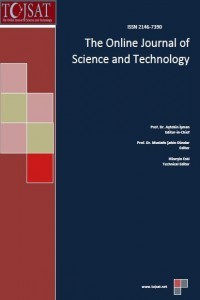Experimental Investigation Of Heat Transfer In A Rectangular Channel With Perforated Ribs
Experimental Investigation Of Heat Transfer In A Rectangular Channel With Perforated Ribs
- ISSN: 2146-7390
- Başlangıç: 2011
- Yayıncı: The association of science, education and technology
Segmentation Strategies in Dermoscopy to Follow-up Melanoma: Combined Segmentation Scheme
Jorge PEREİRA, Rui FONSECA-PİNTO
Activity Based Costing Application in Turkish Hardcoal Authority
Halim AKBULUT, Mehmet Pekkaya, Hakan VARGÜN, Cumhur AÇIKGÖZ
The Effect of Magnetic Treatment on Retarding Scaling Deposition
M. A. Salman, M. Safar, G. Al- Nuwaibit
Experimental Investigation Of Heat Transfer In A Rectangular Channel With Perforated Ribs
Mehmet EREN, Sinan CALİSKAN, Muammer ZIRZAKIRAN
An Audio Data Encryption with Single and Double Dimension Discrete-Time Chaotic Systems
Akif AKGÜL, Sezgin KAÇAR, İhsan PEHLİVAN
Internationalization of New Ventures and the Central Role of The Nascent Entrepreneur
Piotr TOMSKİ, Arnold PABİAN, Felicjan BYLOK
Evaluation of Consumer Confidence Index of Central Bank of Turkey Consumer Tendency Survey
Utilisation of Intelligent Systems in the Economical Evaluation of Transportation Projects
Muhammed Emin Cihangir BAĞDATLI, Rıfat AKBIYIKLI, Aydın DEMİR
